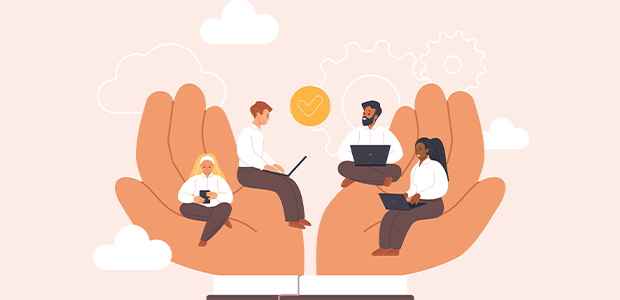
Bridging the gap: smarter strategies for workplace mental health
Over the past few years, it’s been encouraging to see organisations investing more heavily than ever in mental health support. Employee Assistance Programmes (EAPs), wellbeing apps, occupational health, and private medical insurance are becoming the norm, not the exception. And yet, despite all this provision, we still see high rates of absenteeism, presenteeism, and a troubling number of employees falling through the cracks.
It’s what we call the wellbeing paradox: on paper, there’s plenty of help. In practice, too many people still aren’t getting the right help at the right time.
So, what’s missing?
It’s not the good intentions or the budgets, as many organisations are spending more on mental health than ever before. The real gap is in the fit of the provision on offer. We need to get smarter about matching what we offer to who our people really are, and how and when they actually need support. How do we do this?
How to understand your people
This isn’t simply about knowing just how many staff you have or what your turnover rate is, but who your staff really are, what pressures they’re under, and what barriers they face when it comes to accessing help.
A young graduate in their first role might need something very different from a senior manager juggling work, caring responsibilities, and concerns about their teenager’s wellbeing. Remote workers might face isolation risks that an office-based colleague doesn’t. Neurodivergent colleagues may need pathways that feel safe and tailored instead of generic signposting that leaves them navigating service provision that misses their needs.
The more you know about your people by looking at your data, listening to your employees, and asking the right questions, the better placed you are to build support that actually fits.
Making access effortless
So often, good support exists, but it’s hidden behind logins or complicated referral processes. For someone who's already finding things difficult, needing to speak to HR or OH, especially with concerns about being judged or labelled, can feel like too much. When someone’s struggling, the last thing they need is to jump through lots of hoops to access the right support.
Consider whether your current pathways are easy to find and use and frequently reminded. Could self-referral options help? Do people know what support is on offer and when to use it, or do they only hear about it once a year during Mental Health Awareness Week?
Small, practical changes such as QR codes on posters or short explainer videos can remove friction and stigma, and encourage people to step forward sooner, not later. Stories from leaders sharing their own experiences are also helpful in setting the tone to model healthy approaches to accessing mental health services.
Mental health support isn’t one-size-fits-all
It’s becoming increasingly important to move beyond the six-session EAP model. A short burst of support can be hugely valuable for someone facing a life event or mild stress, but when someone’s mental health presentation is more complex, or when there are overlapping issues like neurodivergence, physical health conditions, or family events, they need something more.
This is where personalisation matters. It’s not about throwing out what you already have, but about adding specialist pathways to fill the gaps. For example, remote assessments and specialist matching of staff to therapists can make sure people get help that’s clinically appropriate – whether that means understanding the challenges of an overseas posting, the demands of a frontline role, or even family dynamics.
Think prevention, not just crisis
The smartest mental health strategies don’t just react, they prevent. By using your data well, you can spot risk factors earlier. Is there a team with high turnover and low engagement? Is absenteeism spiking in a certain department? Are younger / older / a particular gender of employees underusing the support you offer?
When you see those patterns, you can target additional support before people hit crisis point. Sometimes this is about training managers to spot early signs. Sometimes it’s about bringing in targeted workshops or webinars that open up conversations around issues like managing performance and preventing burnout, or family mental health and the workplace. Sometimes it’s about creating safe spaces where people can self-refer and get specialist help early and quickly.
The power of integration
Finally, all of this only works when the parts connect. Everyone from HR, occupational health, line managers, and your EAP provider need to be working from the same page. Clear signposting, good data sharing (while maintaining confidentiality), and joined-up processes make a huge difference.
Let’s close the gap together
To really make a difference, we need to make sure the support we offer reaches people when they need it most, that it fits their lives, and is easily accessible.
For more startup news, check out the other articles on the website, and subscribe to the magazine for free. Listen to The Cereal Entrepreneur podcast for more interviews with entrepreneurs and big-hitters in the startup ecosystem.

